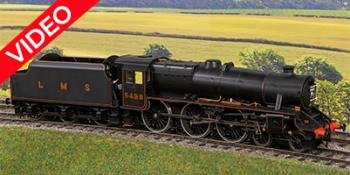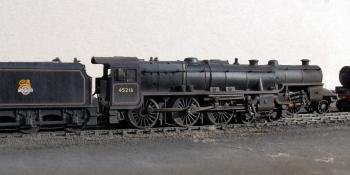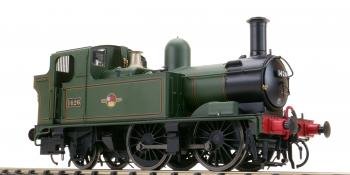With some structures having been damaged in the long journey from ‘Oz’, JONATHAN NEWTON reveals how he is building a new engine shed and road bridge for his ‘O’ gauge layout.
Newton Grove (19F) is heavily inspired from Rose Grove (10F) Motive Power Depot (MPD) and is set in the last years of steam in the North West. When the layout first appeared in the pages of Hornby Magazine (HM166) it was still based in Melbourne, Australia, as indeed was I.
Fast forward a few years and now not only do I work for the magazine but the layout was shipped across to the UK. I have been overwhelmed with the amazing responses I have received about the layout, with many people contacting me before my move asking if I would be interested in exhibiting it. The answer of course is yes, but to do that the layout would need a little upgrading and improving.

Above: Jonathan’s ‘O’ gauge exhibition layout is undergoing upgrades to several structures including Newton Grove locomotive shed.
Having travelled 10,519 miles across the ocean, the layout suffered some slight damage. This was mainly in the form of the structures such as the road bridge and the locomotive shed. I could have spent time fixing them, however as they were my first ever scratchbuilt structures I decided to scrap them and build new replacements.
The first structure I started with was the road bridge. This is made entirely from Foamex and the brickwork is Slaters 7mm red brick sheeting. The height of the bridge has been lowered and widened for a more realistic and scale appearance. It has also been modelled on an incline, to match that at Rose Grove. I made sure the bridge would be wide enough to accommodate two lanes and also a footpath on either side, the latter being from the excellent Scale Model Scenery range. These still need to be cut to length and so far only one has been painted.

Above: Laser-engraved Foamex foam board forms the basis of the walls for the new engine shed.
The walls on the bridge have stone capping. This has been achieved from cutting 3mm Foamex to the length needed, marking out the stones one by one, then denting and scribing them all to look like rough stone. This was time-consuming but the results are very pleasing. I have started to pick out random bricks with a darker brown and tone the brickwork down, but there is still a lot to do yet.
Behind the bridge I have built a brick retaining wall. This was also made using 3mm Foamex, with two pieces glued together for added strength. These bricks have been scribed one by one, row by row. The process took weeks and while I’m happy with the results, it would have been faster to just use Slaters’ brick sheets, as I have done for the bridge. This area will be mostly hidden, but at least the detail is there.

Above: The arduous task of painting brickwork has begun, with individual bricks picked out in appropriate colours to add tonal variety. The road bridge has also been lowered and widened to improve its appearance.
The other structure that I had to tackle was the locomotive shed. The original one was too light and flimsy, so a new one was designed. The size is exactly the same as the old one and has been made completely from Foamex. The shed was drawn up in CAD and then laser engraved onto 3mm Foamex. These pieces have been glued to a 5mm shell for strength.
Next steps on the build of the engine shed will be the roof and interior detail. These have already been laser-cut in plywood and are waiting for when it’s time to install them, but painting of the building will take place first. A mirror interior will be placed on the rear side wall of the shed to give the impression that it’s a six-road MPD, just as Rose Grove was, and that will also highlight the interior detail that can’t be seen from the front.

Above: The new locomotive depot building is taking shape and is set to look the part once completed and installed on the layout.
Finally, the entire layout has been wired for Digital Command Control (DCC) operation and decoders, stay alives and speakers have been purchased to convert five more locomotives. There are two ‘Black Fives’, an ‘8F’, ‘Jubilee’ and finally an Ivatt ‘2MT’ 2-6-0. These will increase the number of DCC sound-fitted locomotives I have and all will be used at exhibitions.
The layout is due to make its exhibition debut at the Keighley Model Railway Club show being held on March 2/3 2024 at Woodbank Nurseries in Harden, Bingley. If you’re based in West Yorkshire or are planning on coming across for the weekend, make sure you stop by and say hello. HM
• Visit www.keymodelworld.com/staff-projects to see more behind-the-scenes layout and modelling project articles from the Hornby Magazine team.
When the layout first appeared in the pages of Hornby Magazine (HM166) it was still based in Melbourne, Australia, as indeed was I





